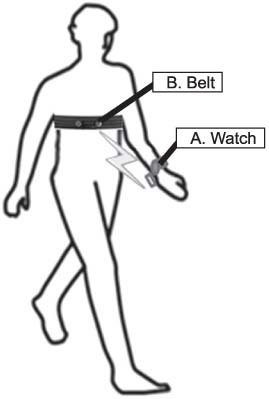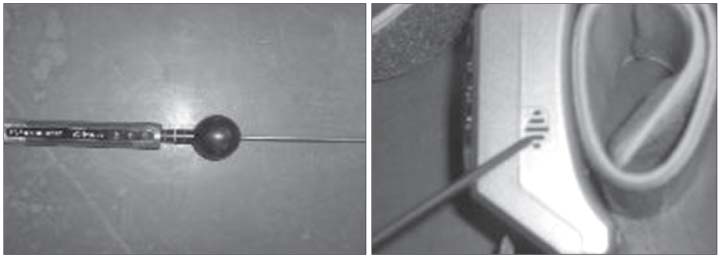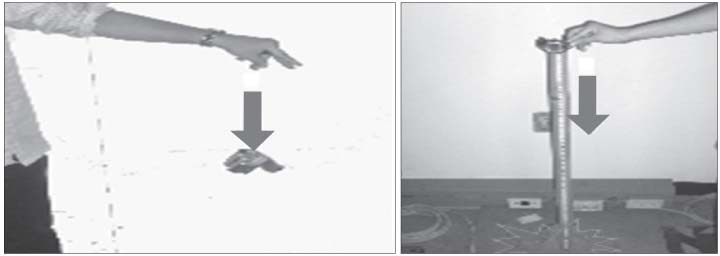Healthc Inform Res.
2010 Mar;16(1):30-35. 10.4258/hir.2010.16.1.30.
Electro-Mechanical Safety Testing of Portable ECG Devices for Home Healthcare Usage
- Affiliations
-
- 1Brain Korea 21 Project for Yonsei University College of Medicine, Korea. sunkyoo@yuhs.ac
- 2Department of Medical Engineering, Yonsei University College of Medicine, Seoul, Korea.
- 3Electric Testing Institute, Gunpo, Korea.
- 4Department of Medical Information System, Songdam College, Yongin, Korea.
- KMID: 2166563
- DOI: http://doi.org/10.4258/hir.2010.16.1.30
Abstract
OBJECTIVES
This paper suggests the experimental guidelines to evaluate the electro-mechanical safety of belt type equipment. The electro-mechanical safety was determined by using the International Electrotechnical Commission guidelines, which are widely used as important factors for assessing the electro-mechanical safety of belt type equipment. However, the local guidelines on wearable healthcare sensors are currently not well-established. Therefore, safety guidelines suited for the actual circumstances in Korea are required, and this paper attempts to try a new experimental safety test procedure of the wearable healthcare sensor. METHODS: This belt type device measures the electrocardiogram (ECG) and heart rates by attaching to the chest. Examination lists were selected by analyzing the common standards ofelectro-mechanical safety (IEC 60601-1) and environment tests (IEC 60068-1, IEC 60068-2) of home-healthcare equipment. RESULTS: The essential electrical safety, which was required for the RS300G3 as a medical device, was evaluated, and most of the examination lists were selected by considering the circumstances of the users. The device passed all the selected examinable lists that are applicable to the Korean environment. CONCLUSIONS: This study has limitations to estimate and to conduct electro-mechanical safety experiments because our study focused on the belt type of heart-rates equipment. We are not taking into account the overall electro-mechanical home-healthcare measurements. According to industrial and technological development, there are infinite possibilities for the advancement of home-healthcare equipment, so more examination lists for safety are being added in addition to what we have done.
Keyword
MeSH Terms
Figure
Reference
-
1. Song JE, Kim SH, Chung MA, Chung KI. Security issues and its technology trends in U-healthcare. Electron Telecommun Trends. 2007. 22:119–129.2. Lee YD, Chung WY. A study on WSN based ECG and body temperature measuring system for ubiquitous healthcare: 1. the construction of sensor network platform. J Korean Sensor Soc. 2006. 15:362–370.
Article3. Ahn KH, Park JW, Shin JT, Shin DR, Cho JD. Healthcare system for Blood Glucose Monitoring. 2004. In : Proceedings of 2004 spring conference of the Korean Society for Internet Information; 2004 May 7-8; Pocheon, KR. Seoul: Korean Society for Internet Information.4. Kim HD, Kim DJ. The relation of heart rate (HRR) and cardiovascular disease risk factors at exercise stress testing in the middle-aged men. Korean J Phys Educ. 2005. 44:299–307.
- Full Text Links
- Actions
-
Cited
- CITED
-
- Close
- Share
- Similar articles
-
- Development of a flexible chest electrode belt for continuous ECG measurement
- Implementation of Device Independent ECG Reporting System Using Web Development Framework
- The Clinical Efficacy of Portable Monitoring Devices(MESAM IV and Edentec) in Evaluating Sleep Apnea Syndrome: A Comparative Study with Simultaneously Recorded Standard Polysomnography
- Pocket-Sized Echocardiography Devices: One Stop Shop Service?
- Review of regulatory management on standards and specifications for veterinary medical devices in Korea




